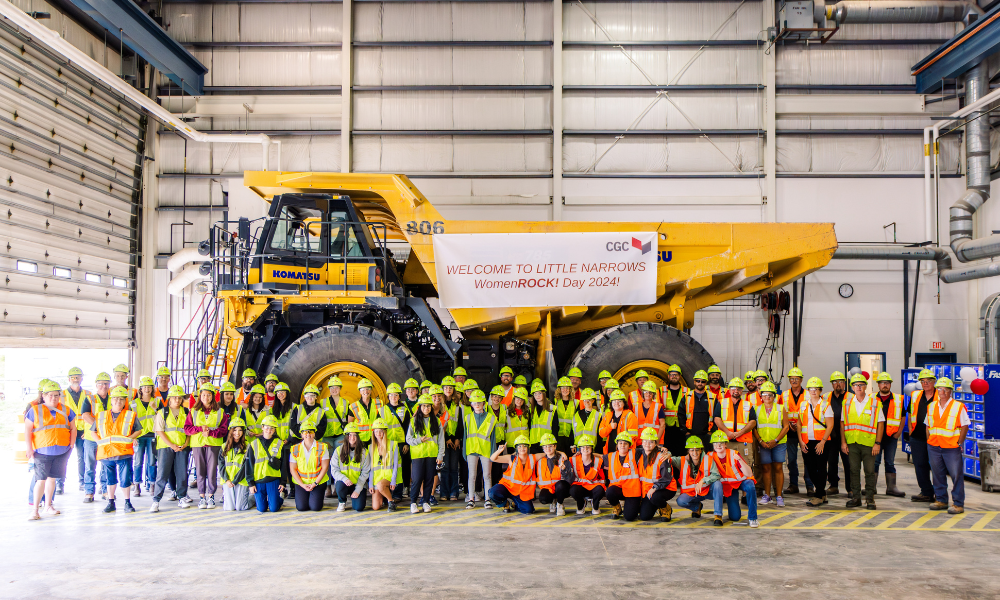HR leader Joe Bielik of CGC talks about importance of safety in manufacturing – along with benefits of global ownership, challenge of labour shortages

Joe Bielik initially planned on becoming a teacher. However, gaining some experience in the business world changed his trajectory.
“I worked during university, and I liked the fast pace of business,” says Bielik, who is now director of human resources at manufacturer CGC.
Coming from a family of entrepreneurs, Bielik was naturally drawn to the business environment and through his evolving interests, he found himself gravitating toward HR.
This shift was catalyzed by hands-on experience, first in the restaurant industry, where Bielik realized his interest in the people-focused side of business.
"I was involved in the managerial, supervisory capacity, and so training, recruiting — a lot of the HR skills that I didn’t know were part of HR — I enjoyed, and so that led me to HR."
Focus on manufacturing at Weston Bakeries, CGC
Bielik’s first significant role in HR came at Weston Bakeries in 2001, a “very good starting point,” he says.
“It gave me an opportunity to work in a union and non-union business… which gave me a real appreciation for how, with HR, you have to be flexible with multiple different groups of people and multiple sites — and it was a very, very good experience.”

Nearly three years later, Bielik went on to join CGC, a manufacturer of building materials first known as Canadian Gypsum Company started in 1907 in Nova Scotia, which allowed him to deepen his expertise in the manufacturing sector.
The move also marked a significant personal change, as Bielik relocated to British Columbia, then later to Nova Scotia, and now Hagersville, Ont.
"It was just a great opportunity, looking at the opportunities in Canada and then the US with [parent company] USG. I just thought I needed a change for myself," he says.
Regional HR model at CGC
Aside from a two-year gap, Bielik has stayed with CGC for 20 years. The company has roughly 830 employees in Canada, but with a growth strategy that includes opening two new locations, it expects to reach about 1,000 by mid-2026, he says.
One of the key challenges is managing a regional HR model, and Bielik now has four HR business partners reporting to him in Canada — each managing two or three plant locations.
This provides them with flexibility, he says, but also requires in-depth knowledge of cross-country differences.
“We're working in different provinces, so it challenges the skills of knowing the employment legislation, the safety legislation, and different parts of the business where we have different product lines at CGC, at our locations.”
Growth and global integration with Knauf
In 2019, CGC and its USG were acquired by Knauf, a global organization based in Germany. This change opened up new opportunities for Bielik and his HR team, particularly in terms of global integration and sharing best practices.
“It was quite a change in 2019, but everything’s been positive and [meant] growth, and lots of opportunities for people,” he says.
Bielik reports to the US side of the business, the senior director of HR operations and employee relations in Chicago, who reports to the CHRO for North America, who then has a dotted line to Germany.
The acquisition also provides greater access to international resources and ideas, he says.
“It brings more of a global feel to it, so we do have town halls that are hosted by the top HR person in Knauf, which is over in Germany. But it brings a more holistic [approach] of more ideas: ‘What are they doing in Germany? What are they doing in all other parts of the world?’
‘And we are sharing our best practices of building the new plants, growing the culture, our safety culture.”
Safety: A core value at CGC
One of the pillars of CGC’s corporate culture is safety, and Bielik is passionate about making sure this value is embedded in every aspect of the company’s operations.
“Safety is number one… A lot of companies will say that, but when our CEO starts a town hall with safety, to me that talks about the culture of the company,” he says.
At CGC, safety isn’t just a box to check; it’s integrated into daily operations. From safety training to daily huddles and equipment checks, the company ensures that employees are constantly reminded of the importance of working safely.
“We spend countless hours on safety,” Bielik says. “We have courses throughout the year that we will put our leaders through… right down to the manufacturing floor.”
It’s also important to balance classroom versus on-the-job training for safety, he says.
“We don't want them sitting in front of a computer for hours on end, because they'll become very bored and they won't retain anything, and then we also want them to be part of their team and learn from their team members, and that's where we see the mentorship come in.”
Addressing labour shortages through development programs
Like many companies in the manufacturing sector, CGC has faced challenges in attracting and retaining skilled tradespeople and engineers. Bielik and his team have responded by building partnerships with colleges and universities to create apprenticeship programs.
“We’re willing to do apprenticeships to find those people that maybe are starting out their career, and we’re going to help them with getting their hours, getting the experience that they need to become the Red Seal,” he says.
CGC’s strategy for recruiting and retaining talent also includes a focus on co-op programs for engineers, which allows the company to identify and develop high-potential candidates before they graduate.
"We have co-op options available from coast to coast,” says Bielik. “If we can find people and develop them through their co-op terms, and we ask them, we try to bring them back as often as they want… we will have an offer of employment ready.”
These programs have proven successful, he says, with many former co-op students going on to become plant managers or department heads within the company.
Expanding talent pool through DEI at CGC
In a traditionally male-dominated industry like manufacturing, CGC has made a concerted effort to diversify its workforce, such as encouraging more Indigenous candidates and women to pursue careers in manufacturing.
Bielik describes initiatives like the recent "Women Rock Day" at one of CGC’s quarries, which invited high school students to explore careers in engineering and manufacturing.
“We invited five high schools from around the area... and we had 40 grade 11 students come to the quarry,” he says, adding that some were able to try driving the 100-ton haul trucks.
One of the company’s more innovative approaches to finding much-needed talent includes virtual simulators so people gain a better understanding of driving haul trucks or loaders.
Adapting HR to changing business landscape
Reflecting on his 20 years in HR, Bielik cites the changes in automating repetitive tasks in manufacturing, such as packing fresh bread on the line at Weston.
“That was a very hands-on job, where there's lots of potential for injuries, repetitive strain and so forth, whereas now the challenge of the business environment is really through automation. And so we don't want frontline employees to be manually packing, we want them to be able to use their minds to… solve things better.
“We want them thinking about continuous improvement: ‘How do we automate that?’ We're not trying to get rid of jobs, but we're trying to automate the line for it to be easier for them to do their job.”
HR has had to adapt alongside these changes, focusing more on upskilling employees and ensuring they are prepared for the demands of a modern manufacturing environment, he says.
"That has been the challenge of ‘How do you upskill those people? Make sure that, at two o’clock in the morning, they’re going to make the right decision.”
Throughout these changes, Bielik has remained committed to aligning HR strategies with the broader goals of the business, ensuring that his team is not only supporting the workforce but contributing to the company’s success.
“We’re focused on retention… we want to be competitive,” he says. “That’s where I see HR aligning to the business and really understanding the business.”




